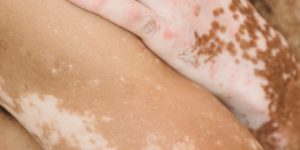Skin Micrograft - Leucoderma
Skin Micrograft - Leucoderma

Leukoderma / Vitiligo
Leucoderma or Vitiligo tends to be a misunderstood disease. Here’s more on what causes it, its symptoms and the treatment for it.
What is Leukoderma or Vitiligo?
Vitiligo or Leucoderma is a disease in which the skin loses pigment due to the destruction of melanocytes or pigment cells i.e. areas of the skin become white.
Who gets Leukoderma?
Leucoderma affects at least 1-2% of the world’s population; both males and females are equally affected. The age of onset can be from birth to old age; however, it is most common in individuals between the ages of 15-30. Nearly 20 percent of cases are genetic. Even though most people with vitiligo tend to be in good health, they face a greater risk of having thyroid problems, anaemia, and alopecia.
Both predisposing (genetic) and precipitating (environmental) factors contribute to vitiligo. Many patients attribute the onset of their vitiligo to physical trauma, illness, or emotional stress. Onset following the death of a relative or after severe physical injury is often mentioned. Even sunburn reaction may precipitate vitiligo.
What is the course of the disease?
Leukoderma is notorious for its erratic behaviour. The course varies from person to person and in the same individual from time to time. Spontaneous re-pigmentation is rare.
Is this disease contagious?
No! Leukoderma is not contagious i.e. it cannot spread by touching someone or even by handling personal belongings or food.
Can Vitiligo / Leukoderma be treated?

This disease can be treated with the following treatment option:
- a) Photo chemotherapy (PUVA) or vitiligo micro punch skin grafting.
- b) Melanocyte / pigment culturing. All parts of the body can be treated; Even the sensitive areas like eyelids, lips, fingers and joints can be treated without any scars.





